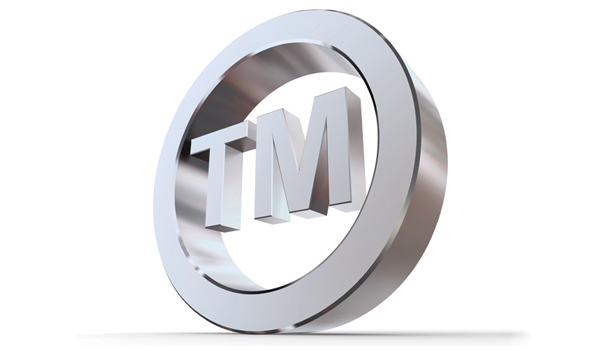A logo is a valuable asset for any business. Whilst a company’s very product or service – or even its workforce – may represent the largest source of investment, the power of a striking brand logo cannot be overstated. Nike and Apple have got to where they are today by offering top quality sportswear and tech gadgetry, but the simplicity of their branding has also undoubtedly stood them both in good stead. A glance at that iconic tick or semi-eaten apple does seem to make the old adage of ‘less is more’ nigh-on indisputable.
Moreover, both logos are instantly recognisable in all corners of the globe. This is why a well-devised logo can be of equal monetary worth to an enterprise’s other property. “One of the great things about logos is that they are international so you don’t have any problems with language barriers,” elaborates Kate O’Rourke, trade mark attorney at law firm Charles Russell. “If you think about some classic examples recently, the Starbucks logo used to have ‘Starbucks’ in it. It doesn’t even do that anymore. People recognise the logo and automatically think of Starbucks. It then doesn’t have to worry about a possible contrary meaning of Starbucks in other countries and other languages.”
It is no coincidence therefore that companies look to protect their logos through the registration of a trademark. As O’Rourke says, “logos can be really strong trademarks.”
And whilst the challenges of registering a trademark have been touched upon before in the pages of Elite Business, the problems presented when one is revoked are new territory indeed. Needless to say, a recent case involving global fashion brand Gucci has thrown the subject into the spotlight.
Things came to a head when fellow fashion brand Gerry Weber applied to register its logo, an interlocking G that bears certain similarities to Gucci’s own famous logo. It will come as little surprise to learn that Gucci filed an opposition to the application, only for Gerry Weber to retaliate. It applied for Gucci’s trademark to be revoked on the grounds of non-use, claiming there had been no ‘genuine’ use of the Gucci logo for a five-year period. “It seems that Gerry Weber decided ‘okay you are going to oppose the registration of our logo so I am going to attack the registration of your trademark’,” says O’Rourke. “This is not unusual. Companies don’t usually attack other brands without good reason.”
The onus thus fell on Gucci to prove that it had made ‘genuine’ use of its logo. “When someone files an application to revoke a mark on the grounds of non-use, the registered trademark proprietor has to file evidence showing that they have actually used it,” explains Catherine Richardson, associate at Charles Russell. “And that is not just a case of showing you have used the mark on one scarf in 1991. You have to show that you have used it in relation to every single good or service that you have listed in the specification. It has to be more than just ‘token’ use. It is not enough to show that you used it maybe once or twice.”
One would assume this is something Gucci could present at the drop of a hat, but alas, it fell short. The hearing officer in the case said the evidence put forward by the company was not sufficient, specifically in relation to goods in classes 14 (jewellery), 18 (bags and purses) and 25 (various items of clothing in addition to scarves, socks, belts and shoes). Issue was also taken with Gucci’s global reputation and length of trading being put forward as evidence to help support its case.
“Gucci had put a few sentences in its evidence that said that Gucci is obviously a very well-known brand, it is sold in multiple countries and it has this many million sales per year,” says Richardson. “But the hearing officer queried the relevance of that to this particular case. What does that actually show about use of this particular trademark in relation to these particular goods? It is important in these cases to ensure that when collating evidence, trademark owners consider ‘what are we trying to show?’”
Gucci’s trademark was therefore revoked in the classes mentioned above, and one can speculate that this was down to lack of preparation. “Quite frequently, when we get applications like this, we will ask clients for evidence of use and it is quite clear that records of where and how brand owners have used their trademark are not kept as a matter of course,” says Richardson. “I suspect that is something that has happened with Gucci. They may have unexpectedly been landed with this application and had to rummage through their archives to find relevant evidence. I would not be surprised if they struggled a bit.”
Clearly, there is a lesson here for businesses of all sizes. “If you don’t use a trademark for five years without good reason, then you are at risk that some party could apply to cancel it,” says O’Rourke. “But that five years in the UK could be five years just prior to someone filing the cancellation action or they can stipulate a five-year period that could have ended two years ago. That is why it is very important for owners of trademarks to keep continual records, not just do it for a couple of years and think ‘that’s fine now’.”
That being said, it isn’t all over for Gucci. It can still reapply for the trademark, but its approval may depend on whether it can get hold of the evidence this time around. Otherwise, speed is very much of the essence. “Gerry Weber have already filed an application for their logo, which will have a filing date before any new mark which Gucci might file,” says Richardson. “On that basis, Gerry Weber, as it came first, would have prior rights on which to oppose Gucci’s new application if there is too much similarity between them.”
Whatever the outcome, the Gucci case has underlined the importance of taking good care of one’s intellectual property. As O’Rourke concludes, “you have to remember that a trademark registration is a monopoly right. The price of that is that if you don’t use, it you can lose it.” ![]()
Share via:


















































